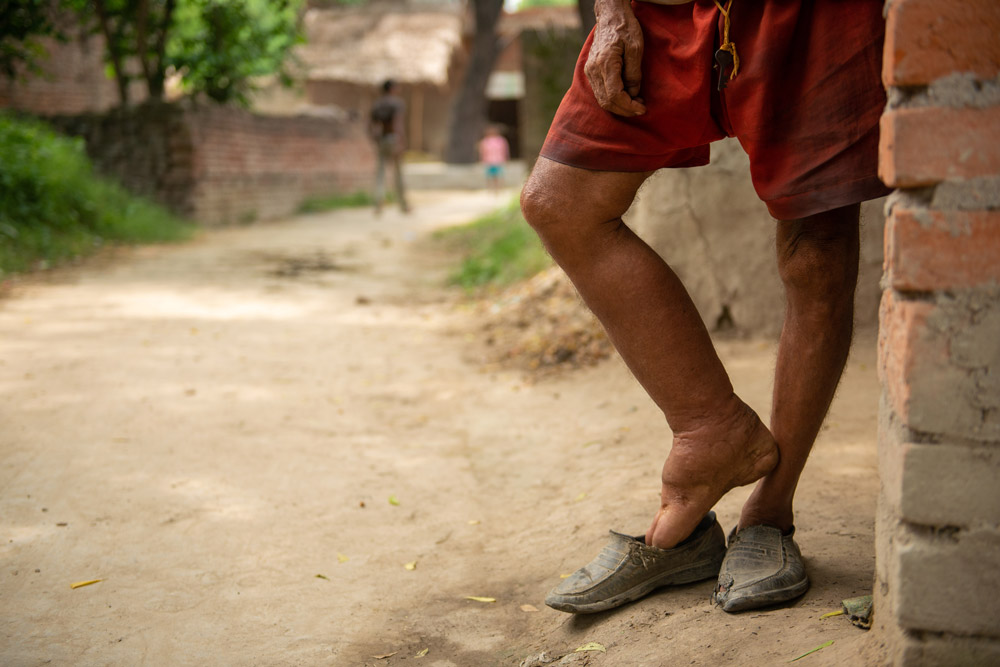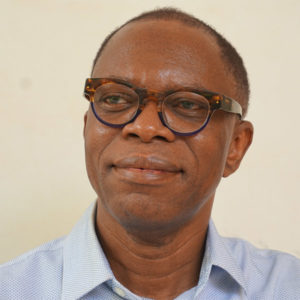Lymphatic Filariasis: Ending a Debilitating Scourge
By Dr. Yao Sodahlon
Lymphatic filariasis (LF), or “elephantiasis,” is an ancient parasitic disease transmitted by mosquitoes including species that transmit malaria. With more than a billion people at risk in 72 countries, the disease is commonly found in rural communities where access to health services is poor. LF causes painful swelling of the arms and legs, known as lymphedema, and severe swelling of the scrotum in men known as hydrocele. Patients are ostracized and stigmatized, often rejected from their community as they become disfigured and those who are severely afflicted struggle to live a happy and productive life.
The turning point
Recognizing the suffering and devastating socio-economic impact of LF, The World Health Assembly (WHA), passed resolution WHA 50.29 in 1997 calling for the elimination of LF as a public health problem.
In 2000, the World Health Organization (WHO) launched the Global Program to Eliminate LF (GPELF) with a two-pillar strategy: the first interrupting transmission by treating everyone in endemic communities annually for 2 to 6 years with 2 to 3 antiparasitic medicines: ivermectin, albendazole, and diethylcarbamazine (DEC). The second pillar is to alleviate suffering by managing morbidity and preventing further disability.
Before countries are validated by WHO for eliminating LF as a public health problem, they must demonstrate successful implementation of both pillars.
Hope: The game changing donations of medicines to billions of people
After WHA 50.29 resolution was passed, MSD and GSK made an unprecedented announcement in 1998 to donate Mectizan® (ivermectin) and albendazole, respectively, to endemic countries until LF is eliminated. In 2012, Eisai joined the global effort by donating DEC [1].
The Global Program to Eliminate LF (GPELF) in action
The GPELF is a well-structured and well documented programme among the neglected tropical diseases (NTD) specific disease programmes. WHO’s GPELF, published field manuals and guides for country programmes and created regional programme review groups (RPRG) to review progress and provide technical recommendations to countries. The Global Alliance to Eliminate Lymphatic Filariasis (GAELF) was established to facilitate collaboration and advocacy. Regional LF support centers were also created to facilitate capacity building and develop innovative solutions to operational challenges.
By the end of 2020, 17 of the 72 endemic countries (24%) were validated by WHO for eliminating LF as a public health problem. These include 2 sub-Saharan African (SSA) countries: Malawi and my home country, Togo. Remarkably, WHO also estimates that the burden of LF has declined worldwide by 74% since the GPELF was launched.

Image credit: PradeepGaurs / Shutterstock.com
Maintaining Momentum
I have been privileged to be part of the success of LF elimination at various levels and in increasing capacities. First as a country programme manager in Togo, where I launched the country’s LF elimination program. I now serve at the global level as director of the Mectizan Donation Program. To witness the evolution of LF elimination has been humbling. However, the work that remains is also humbling.
Sustained high coverage is key to interrupt LF transmission. In Africa where onchocerciasis is co-endemic, 10 years of ivermectin distribution provided a platform to launch and scale up LF elimination programmes by adding albendazole to ivermectin. High coverage can be achieved thanks to the innovation of community directed treatment with ivermectin (CDTI). This strategy empowers community-selected volunteers to safely administer the medicines and to reach people living in the most remote communities.
Despite the availability of free medicines and a platform for distribution, scale up of LF interventions in sub-Saharan Africa has been slow in some countries. Ongoing competition with high-priority health problems limited access to government funding for LF elimination activities. The two countries in SSA that have eliminated LF were innovative in their approach to attract funding. In Malawi, the LF program manager leveraged the worth of the donated medicines and the relative value, which convinced the country to allocate government funding. Togo leveraged the spirit of innovation to link LF elimination with malaria control, which helped convince the Global Fund to Fight AIDS, Tuberculosis and Malaria to support LF activities.
When WHO published a manual on preventive chemotherapy for NTDs in 2005 that championed co-implementation of NTD interventions, special NTD funding initiatives were launched by the UK and US governments in 2006. This resulted in significant acceleration of the programmes in supported countries.
“We should ensure countries achieve sustained elimination of the disease or it could bounce back!”
The Road Ahead
In early 2021, the WHO NTD Roadmap 2021–2030 was launched assigning targets for each of the 20 designated NTDs. The new Roadmap continues to promote integration and encourages increased domestic funding. The Covid-19 pandemic and resulting economic downturn leading to the recent UK funding cut for overseas aid requires innovation to maintain momentum and ensure successful implementation of the Roadmap. We must consider the following:
- Integration of country NTD programmes must not result in staff reduction creating heavy burden on few people.
- Integration strategies must be agile enough to support disease specific initiatives where necessary.
- To achieve elimination through preventive chemotherapy, our most powerful tool remains community drug distributors who help maintain high coverage in communities too remote for health systems to reach.
- NTDs interventions introduce equity into health care by reaching the poorest populations and must be considered by countries as beneficial to the “common good” financially supported by the government.
- Finally, stakeholders must collaborate to diversify donor landscape.
The Roadmap targets 41 additional countries for validation by 2030 and 14 for post-treatment surveillance to achieve elimination of LF as a public health problem. These are achievable goals. I believe however this is a missed opportunity to move LF in the category of diseases to target for elimination of transmission like onchocerciasis. As mentioned above the GPELF was launched with “elimination of transmission” as strategic objective. We have the tools and the momentum. We should ensure countries achieve sustained elimination of the disease or it could bounce back!
Footnote
[1] albendazole + ivermectin are distributed in countries where onchocerciasis (river blindness) is co-endemic; albendazole + diethylcarbamazine (DEC) and more recently ivermectin + DEC + albendazole in other countries. Albendazole alone twice annually is recommended in communities where loiasis is co-endemic.
This blog post is part of our Voices from Africa series. Read other posts in the series here.

Dr. Yao Sodahlon is the director of the Mectizan Donation Program (MDP). He is responsible for the overall success of the Program, facilitating access and good and safe use of Mectizan® (ivermectin) donated by MSD for the global elimination of onchocerciasis and lymphatic filariasis.
Before joining MDP in 2006, Dr. Sodahlon worked in Togo for over 10 years at the Ministry of health contributing to health system strengthening and disease control/elimination initiatives. He also taught clinical parasitology at Lomé school of medicine in Togo. Dr. Sodahlon is a medical public health professional specializing in clinical laboratory and tropical diseases.
Social Handles: @YaoSodahlon, @TFGH